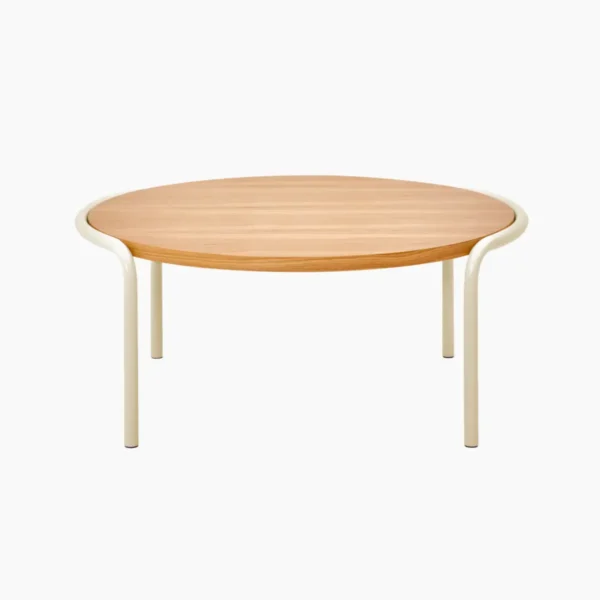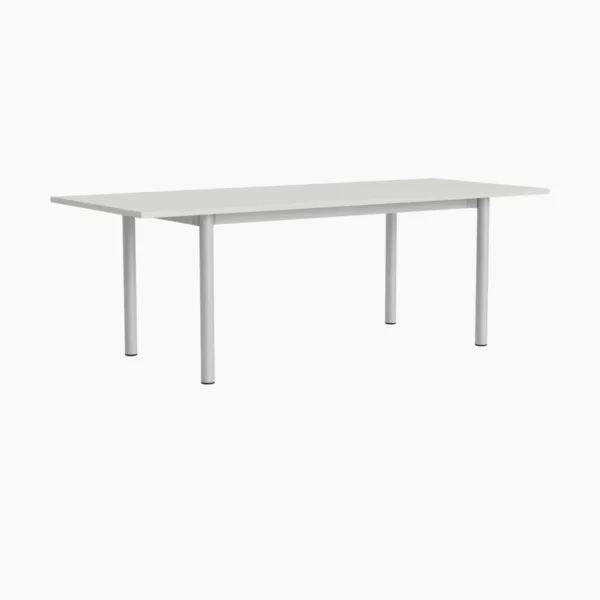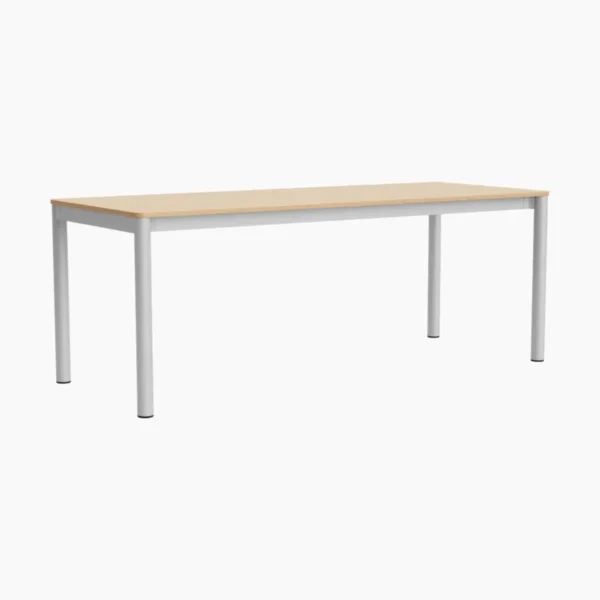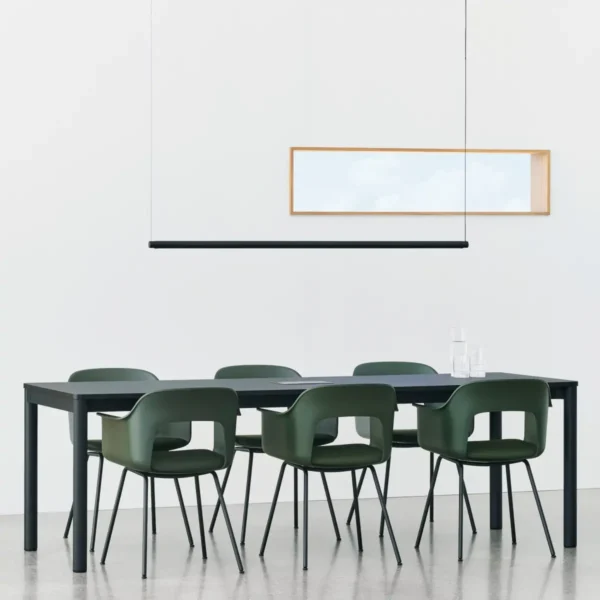

Land Table
Summary
In its simplest form, Land Table is a work of art—and craft. Building upon the traditions of her Norwegian heritage and inspired by the farmland around her, designer Stine Aas crafted this dining table with sophisticated hardwood construction and thoughtful details.
Dimensions

Land Table
Height: 29.5″
Width: 74.8″–125.6″
Depth: 39.4″
Diameter: –
The concise, comprehensive expression of what a table can be

Come to the table
Gather around the Land Table, designed for coming together and built to last through generations. It’s meant to be used every day, made with the highest quality craftsmanship thanks to solid hardwood construction and considered details. Its timeless design allows the table and storage pieces to feel at home anywhere, any time. Land is an heirloom now, and for the future.
Crafted details
Drawing on the long tradition of woodworking and with inspiration from the arts and crafts movement, Land Table is a contemporary interpretation, rigorously designed and distinctly modern. The sophisticated lines of the collection juxtapose its more pastoral sensibility and substantial size.


Honest to goodness
Made in the US, Land Table features timber from North American hardwood forests, harvested within 350 miles of the West Virginian manufacturing facility. And the collection is designed to last—meant to be passed through generations and homes, reducing materials headed to the landfill.
Stine Aas
From her home and studio in Bergen, Norway, designer Stine Aas finds inspiration in heritage—whether that’s from the land around her or stories and heirlooms passed down through generations.
Aas draws on the long tradition of woodworking in much of her craft, including her first designs for Herman Miller. The Land Collection includes a dining table, credenza, and console that marry rigorous details like tongue and groove joinery and oversized heirloom-quality timber with her distinctly modern perspective. A key element in her design exploration is a sense of nostalgia. Aas references the exposed timber frames and light woods found in Norwegian cabins and holiday homes from the 1960s and ’70s, many decorated in the vein of the Arts and Crafts movement—well-made with organic and tactile qualities.
















